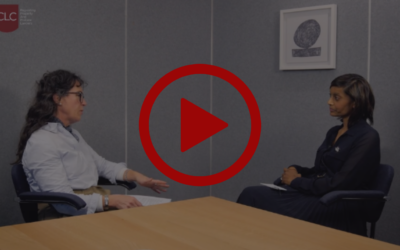HM Land Registry Practice Guides & Souvenir Land
Maria Hardy of Property Conveyancing Consultancy (PCC) briefly explains the benefits of why a thorough understanding of HM Land Registry practice guides can benefit any conveyancer, and then provides an in-depth look into practice guide 17.
HM Land Registry Practice Guides:
HM Land Registry has presently produced 82 practice guides covering most areas of the conveyancing process. In my opinion the practice guides should provide a backbone to any training given to an aspiring or experienced conveyancer, they can be used to show you how to draft the correct execution clause, or how to draft a lease or transfer and much more. The practice guides are there to assist in how to get an application right the first time and how to produce consistency throughout our work. The Land Registrar themselves refer to the practice guides, especially when dealing with complex applications so it just makes sense, that we as property professionals, should familiarise ourselves with the practice guides and follow their direction when dealing with our transactions. This will ultimately reduce requisitions and enable our applications to be registered in a seamless manner.
Practice Guide 17
Practice guide 17 covers souvenir land. During the 1970’s and 1980’s, schemes were set up for the sale of small plots of land with sentimental or commemorative value only. These schemes were often promoted for conservation purposes. All such land was known as ‘souvenir land’. The contents of the practice guide will now be condensed and explained.
Legislation
Under the Land Registration (Souvenir Rules) 1972, HM Land Registry was given the power to declare an area subject to a souvenir land scheme (scheme). The schemes were used in areas where there were a large number of small sized plots within a small radius of each other. The purchasers of the individual plots did not have to register their transaction with HM Land Registry.
The Land Registration Act (LRA) 2002 abolished the schemes and any land affected by them must now be registered. Any land that was formally part of the schemes, will have the following restriction registered in the proprietorship register:
“No disposition is to be registered without the consent of the person or persons (if any) entitled to apply to be registered as proprietor of the land disposed of, or any part of it, as the result of any unregistered transaction effected since [the date of the declaration made under rule 3 of the Land Registration (Souvenir Rules) 1972 as noted in the register].”
Applications
When land, formally affected by the scheme is now purchased, the transaction must be registered with HM Land Registry. The type of application that needs to be submitted will depend on whether the scheme is registered or whether the transaction relates to part or the whole of the scheme. You can find out if a scheme is registered by applying for a search of the index map or carrying out a MapSearch. It maybe worth noting here that a MapSearch does not provide an indemnity provision, whereas a search of the index map does.
1. Purchase of an individual plot:
Where the scheme is registered, you must provide HM Land Registry with:
- a completed AP1 form,
- correct fee; and
- all deeds and documents of title, beginning with the first sale
which created the plot.
Prior to completing an application HM Land Registry will serve notice on the registered proprietor of the scheme informing them of the application. Once the plot has been registered with its own title number, subsequent purchasers of that plot must apply for registration in the normal way, using form AP1.
Where the scheme is unregistered, you must make any application for first registration of an individual plot, using:
- form FR1,
- your application must be accompanied by the correct fee, and
- the usual first registration documents.
Once the plot has been registered with its own title number, subsequent purchasers of that plot must apply for registration in the normal way, using form AP1.
2. Voluntary registration of an individual plot:
The current owner of a plot purchased out of a registered scheme may make a voluntary application for registration at any time using form AP1, and HM Land Registry do not currently charge a fee for this type of application.
3. Purchase of the whole of a scheme:
Where the scheme is registered, you must provide HM Land Registry with a completed AP1 and correct fee.
The effect of the power given to HM Land Registry originally, under the Land Registration (Souvenir Rules) 1972, was that transactions relating to a registered scheme took effect as if the land in question were not registered, therefore, there will be cases where the registered proprietor is not the person from whom the applicant has bought the land. If this is the case, you must send HM Land Registry evidence of the chain of title.
Any registered scheme previously affected will have the restriction referred to above, registered against its title. This restriction will prevent HM Land Registry from registering a transaction of the whole or part of the scheme, unless you can provide the consent of the owners of all plots, which have been sold off and remain unregistered.
Where the scheme is not registered, you must submit your application using form FR1, provide the correct fee and account for all individual plots sold off, so that they can be excluded from the registered extent.
PCC Services
Since 2017 PCC has provided a post-completion outsourcing service to the residential conveyancing sector with great success. PCC was founded on the belief that post-completion formalities had been long overlooked within this sector and the risks that could pose to a conveyancing firm and its clients could be catastrophic.
PCC was therefore established to eliminate this risk and a specialist team were put together to provide the ultimate post-completion outsourcing service, focusing on best practice, customer satisfaction and reducing the risk of requisitions and cancellations.
This year PCC launched its Educational Hub; this is a specific training facility focusing on teaching legal professionals how to do post-completion right the first time.
PCC will be offering training courses based on each of HM Land Registry’s practice guides. PCC’s aim is to break the practice guides down into small understandable chunks, focusing on how to avoid requisitions and get your applications right the first time.
Source of material:
https://www.gov.uk/government/collections/land-registration-practice-guides
Licence: This content is available under the Open Government Licence v3.0 2024
Post-Completion Training For Support Staff
IQ Legal Training and Property Conveyancing Consultancy (PCC) have recently partnered to supply a series of 3 webinars focusing on key post-completion topics with a focus on how to avoid unnecessary requisitions raised by HM Land Registry.
HM Land Registry Practice Guides And The Devolution on the Death of a Registered Proprietor
HM Land Registry Practice Guides And The Devolution on the Death of A Registered Proprietor
Minimising Risk In Post-Completion
Minimising Risk In Post-Completion by Maria Hardy, PCC Education Hub Company Trainer
Post Completion Explained
Post Completion Explained – Submitting an accurate application to update the Land Register and dealing promptly with any requisitions (queries from the Land Registry) that follow are vital to ensuring that your client’s interest in the property is protected and that any charge for a Lender is correctly registered.





